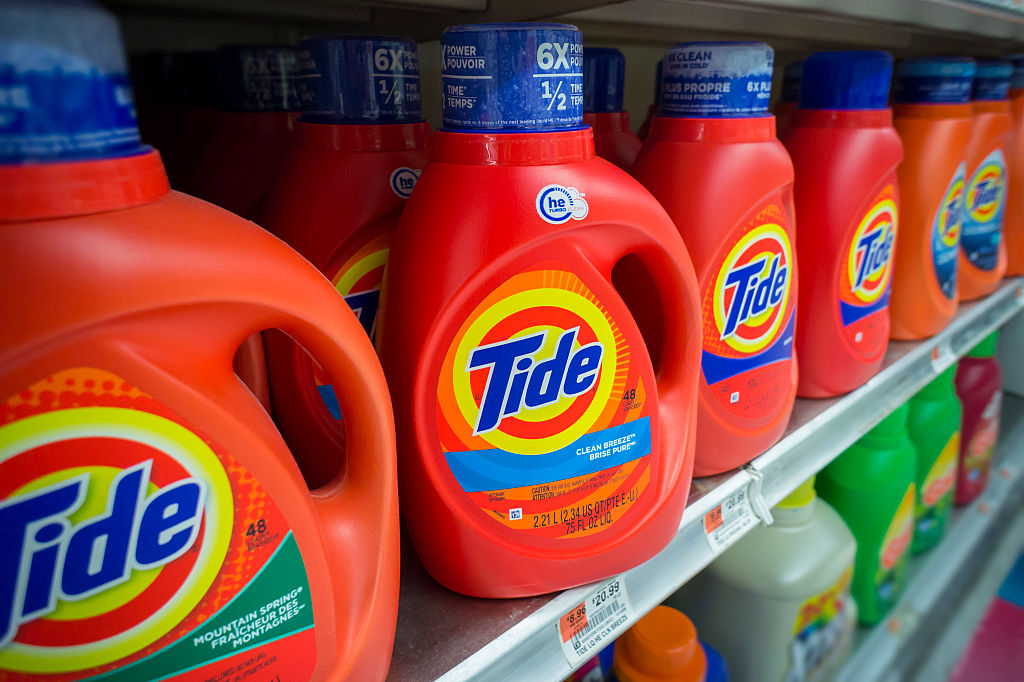Five Beneficiaries of Lower Commodity Costs
These companies shouldn't feel as much of a squeeze on profits now that the prices of oil and raw materials are falling.
Government officials are considering stimulus packages as a way to put more money in consumer pockets. But if commodity prices continue their decline, consumers may not need the extra boost quite so much.
Prices of commodities, which are the raw materials that go into the goods consumers use, have fallen precipitously over the past three months. The most dramatic move has been in the price of oil, which peaked at $147 a barrel on July 11 and closed November 5 at $65.39. But other commodities, including metals, corn and some fertilizers, have also seen dramatic price declines. "Consumers are essentially getting a $200-billion to $300-billion tax cut" because of the 36% drop in gasoline prices since July, says Bill Knapp, investment strategist with MainStay Investments.
Oil refiners, utilities and transportation companies directly benefit from lower oil prices because petroleum is a large portion of their costs. But indirectly, food producers and makers of consumer staples come out winners because they use raw materials and pay to transport the finished products to stores.

Sign up for Kiplinger’s Free E-Newsletters
Profit and prosper with the best of expert advice on investing, taxes, retirement, personal finance and more - straight to your e-mail.
Profit and prosper with the best of expert advice - straight to your e-mail.
While that may be a relief for manufacturers and consumers alike, enthusiasm about how much lower commodity costs will improve corporate earnings is tempered by the weakened economy. Much of the reason for declining commodity prices is simply lack of demand.
Already, Americans are driving less -- through August, 3.3% less than last year, reports the U.S. Department of Transportation. This helped cause oil consumption in the U.S. fall from 21 billion barrels a day to 20 billion during the past year.
The key to picking beneficiaries of declining materials costs is to find the right combination of defensive positioning in a flagging economy on the one hand, and relief from commodity prices on the other.
Consumer staples. Steady Eddy companies that focus on consumer necessities stand to benefit. Procter & Gamble (symbol PG) reported profits for its July-September quarter of $1.03 a share, up 12% from a year prior and a bit higher than analyst estimates.
P&G cited crushing commodity costs over the past several quarters as a difficulty. Lower inputs should help in the future, but P&G can also attract consumers trading down in a tough economic climate. Its value-brand Luvs diapers saw a 30% increase in sales in the first quarter. At its November 5 close of $63.81, the stock was down 13% in 2008. It traded at 17 times trailing 12-month earnings of $3.75 per share, slightly lower than the household-goods industry, but in line with Standard & Poor's 500-stock index.
Refiners. Companies such as Valero Energy (VLO) buy oil from producers, refine it and sell it at the pump. When oil prices were high, their profit margins were squeezed. At $20.70 on November 5, Valero's stock price was down almost 71% in 2008. Yet refiners haven't seen a boost from the downtrend of prices. With the stock trading at four times the company's trailing 12 months' earnings, "Valero is lower now than it's ever been on a valuation basis," says Tom Forester, of Forester Value fund. "If the P/E gets back to within its historical range, then we could get a nice return."
Transportation. It's difficult to pound the tom-toms in favor of airlines, but these bêtes noires of the investing world could finally catch a tailwind. "Maybe that's a trading play, but I wouldn't think that it's a long-term investment," says Scott Weber, who manages Natixis Vaughan Nelson Small Cap Value fund. Railroads and truckers levy hefty fuel surcharges, so a drop in their fuel costs is largely offset by a similar drop in surcharges.
Instead, Weber prefers a company such as Waste Connections (WCN), a trash collector that operates in small markets, which it tends to dominate. "It's a direct beneficiary of lower fuel costs," Weber says. "Net-net, it gets a pickup on the change in diesel-fuel prices."
Waste Connections chief executive Ronald Mittelstaedt says the company has locked in its diesel-fuel costs for 2009 at $3.35 a gallon, versus $4.45 a gallon in this year's third quarter. Waste's shares closed at $33.90 on November 5, 23 times trailing 12-month earnings and 20 times estimated 2009 earnings of $1.72 per share.
Supermarkets. For much of the year, food companies have suffered under the yoke of higher grain, dairy and corn prices. Many have been successful in passing on these higher costs to consumers. And now they'll get relief from the high input costs, right?
Not exactly, says Morningstar analyst Greggory Warren. "There are two complications with that argument," Warren says. "First, how much pricing power did these guys really have? Second, how much did these companies hedge commodity prices at higher levels?" Hershey, for example, locked in cocoa prices this summer at what the company believed were favorable prices, but they have since come down.
Instead, supermarkets such as Kroger (KR) and Safeway (SWY), which have strong private-label brands, are more likely to be beneficiaries, Warren says. The grocers are able to slash prices quickly in response to falling commodities and siphon demand from national brands because they compete primarily on price.
These stocks are also defensive plays in a staggering economy as people give up eating out and turn to homemade meals. On November 5, Kroger closed at $26.70, or 15 times trailing 12-month earnings, and Safeway at $21.60, a mere ten times the previous year's profits.
Get Kiplinger Today newsletter — free
Profit and prosper with the best of Kiplinger's advice on investing, taxes, retirement, personal finance and much more. Delivered daily. Enter your email in the box and click Sign Me Up.
-
 Married? Five Ways to Ensure Your Estate Plans Work in Tandem
Married? Five Ways to Ensure Your Estate Plans Work in TandemGetting on the same page now means fewer potential problems when it counts.
By Kiplinger Advisor Collective
-
 12 Investments No Retiree Should Make
12 Investments No Retiree Should MakeIn retirement, when it's wise to take fewer risks with your nest egg, some investments are just nuts.
By David Rodeck
-
 Stock Market Today: Markets Celebrate Trump's Tariff Détente
Stock Market Today: Markets Celebrate Trump's Tariff DétenteConsumer discretionary stocks led 10 of the 11 S&P 500 sector groups well into the green.
By David Dittman
-
 Fed Leaves Rates Unchanged: What the Experts Are Saying
Fed Leaves Rates Unchanged: What the Experts Are SayingFederal Reserve As widely expected, the Federal Open Market Committee took a 'wait-and-see' approach toward borrowing costs.
By Dan Burrows
-
 Stock Market Today: Earnings and AI Send Stocks to New Highs
Stock Market Today: Earnings and AI Send Stocks to New HighsA massive investment in artificial intelligence and upbeat earnings pushed equities to record levels.
By Dan Burrows
-
 Procter & Gamble Stock Rises on Earnings Beat: What to Know
Procter & Gamble Stock Rises on Earnings Beat: What to KnowProcter & Gamble is trading near the top of the Dow Wednesday after the consumer staples giant beat expectations for its fiscal 2025 second quarter.
By Joey Solitro
-
 Fed Sees Fewer Rate Cuts in 2025: What the Experts Are Saying
Fed Sees Fewer Rate Cuts in 2025: What the Experts Are SayingFederal Reserve The Federal Reserve cut interest rates as expected, but the future path of borrowing costs became more opaque.
By Dan Burrows
-
 Why Is Warren Buffett Selling So Much Stock?
Why Is Warren Buffett Selling So Much Stock?Berkshire Hathaway is dumping equities, hoarding cash and making market participants nervous.
By Dan Burrows
-
 Fed Cuts Rates Again: What the Experts Are Saying
Fed Cuts Rates Again: What the Experts Are SayingFederal Reserve The central bank continued to ease, but a new administration in Washington clouds the outlook for future policy moves.
By Dan Burrows
-
 If You'd Put $1,000 Into Google Stock 20 Years Ago, Here's What You'd Have Today
If You'd Put $1,000 Into Google Stock 20 Years Ago, Here's What You'd Have TodayGoogle parent Alphabet has been a market-beating machine for ages.
By Dan Burrows